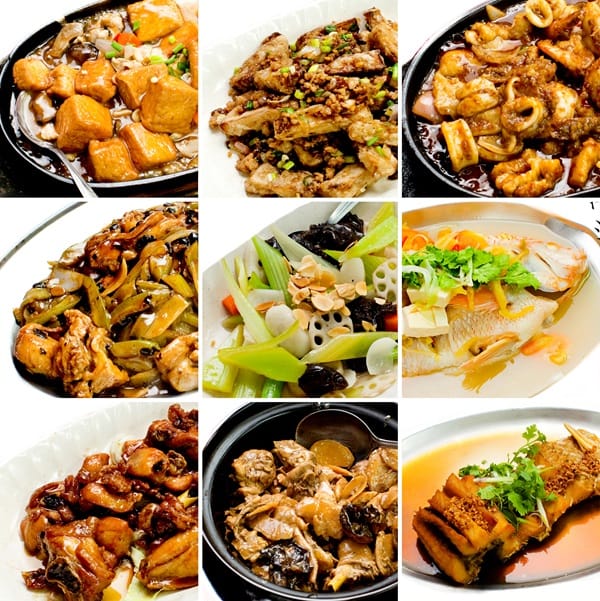Table of Contents
Exploring Chinese Cuisine: Tradition, Health, and Global Influence
Introduction
Chinese cuisine is one of the oldest and most diverse culinary traditions in the world. It is known for its balance of flavors, rich use of spices and sauces, and the philosophy of yin-yang (balance) in food preparation. From stir-frying to steaming, Chinese cooking emphasizes fresh ingredients, aromatic herbs, and a variety of proteins and vegetables, making it both flavorful and nutritious. With regional diversity and global adaptations, Chinese food has become a favorite in many countries.
Major Regional Cuisines of China
Chinese cuisine is vast and varies significantly by region. Some of the most notable culinary traditions include:
- Sichuan Cuisine: Famous for bold, spicy flavors and liberal use of Sichuan peppercorns. Signature dishes include Mapo Tofu, Kung Pao Chicken, and Hot Pot.
- Cantonese Cuisine: Known for mild, slightly sweet flavors, steamed seafood, and dim sum. Popular dishes include Char Siu (BBQ pork), Wonton Soup, and Sweet and Sour Pork.
- Shandong Cuisine: Focuses on seafood and light, savory flavors. Dishes like Braised Sea Cucumber and Sweet and Sour Carp are common.
- Jiangsu Cuisine: Features refined, artistic dishes with a balance of sweet and salty flavors. Lion’s Head Meatballs and Beggar’s Chicken are famous.
- Hunan Cuisine: Spicy and aromatic, using chili peppers and garlic. Signature dishes include Steamed Fish Head with Chopped Chili and Chairman Mao’s Red Braised Pork.
- Fujian Cuisine: Emphasizes seafood, soups, and light seasonings. Dishes like Buddha Jumps Over the Wall (seafood stew) and Drunken Prawns are popular.
- Xinjiang Cuisine: Features influences from Middle Eastern flavors, using lamb, cumin, and naan bread. Dishes include Lamb Kebabs and Hand-Pulled Noodles.

Key Ingredients and Their Health Benefits
- Tomatoes: Used in soups and stir-fries, tomatoes provide vitamin C and antioxidants, reducing inflammation and supporting heart health.
- Sesame Oil: Rich in healthy fats, sesame oil enhances flavor while providing anti-inflammatory properties.
- Soy Sauce & Fish Sauce: These umami-rich condiments add depth to dishes but should be consumed in moderation due to their sodium content.
- Ginger & Garlic: Essential in Chinese cooking, these ingredients aid digestion and have anti-inflammatory and antibacterial properties.
- Chili Peppers: Boost metabolism and contain antioxidants that promote heart health.
- Green Tea: Frequently consumed in China, it is packed with antioxidants and known for its weight management and anti-aging benefits.
Vegetarian Chinese Delights & Recipes
Chinese cuisine offers a wide range of vegetarian dishes that highlight tofu, mushrooms, and leafy greens:
- Stir-Fried Bok Choy with Garlic: A simple yet flavorful dish rich in fiber and vitamins.
- Mapo Tofu (Vegetarian Version): Silken tofu cooked with chili and Sichuan pepper sauce.
- Vegetable Spring Rolls: Crispy rolls filled with cabbage, carrots, and bean sprouts.
- Hot and Sour Soup: A tangy soup with mushrooms, tofu, and bamboo shoots.
- Kung Pao Cauliflower: A vegetarian twist on Kung Pao Chicken using cauliflower.
Meat and Seafood in Chinese Cuisine
Chinese cuisine includes a variety of meats and seafood, each cooked in unique styles:
- Beef: Commonly stir-fried with vegetables, as seen in Beef and Broccoli and Mongolian Beef.
- Goat & Lamb: Popular in Northern and Western China, used in dishes like Xinjiang Lamb Skewers and Spicy Goat Stew.
- Chicken: Found in dishes like General Tso’s Chicken, White Cut Chicken, and Tea-Smoked Chicken.
- Seafood: A staple in coastal cuisines, with specialties like Steamed Fish with Ginger and Scallions and Sichuan Chili Shrimp.
- Game Meat: Occasionally used in rural China, including wild boar and pigeon, adding variety to the culinary landscape.
Innovations in Chinese Cuisine
- Fusion Chinese Cuisine: Chinese dishes have adapted to various global influences, resulting in innovations like Indian-Chinese cuisine (Hakka Noodles, Chili Chicken) and American-Chinese dishes (Orange Chicken, Chop Suey).
- Plant-Based Alternatives: Growing interest in vegetarianism has led to the rise of plant-based versions of popular dishes, including tofu-based mock meats and jackfruit Peking duck.
- Tech-Enhanced Cooking: AI-powered woks and smart kitchen appliances help streamline cooking processes in Chinese restaurants worldwide.
- Healthier Cooking Methods: Many chefs now focus on steaming, grilling, and using less oil to create lighter versions of traditional dishes.
- Sustainable Practices: Restaurants are emphasizing farm-to-table sourcing, reducing food waste, and using organic ingredients.
Healthy and Cost-Effective Cooking Methods
- Use Seasonal Ingredients: Enhances flavor while reducing costs.
- Reduce Oil Usage: Opt for steaming, boiling, and roasting over deep-frying.
- Balance Protein and Vegetables: Ensure meals include lean proteins and fiber-rich vegetables.
- Homemade Sauces: Store-bought sauces can contain excess sodium and sugar, so making them at home allows for healthier options.
- Batch Cooking: Prepare large portions of dumplings, soups, and stir-fries to store for later meals, saving both time and money.
Chinese Sweets & Bakery Industry
Chinese desserts tend to be lighter than Western sweets, focusing on subtle sweetness and natural flavors:
- Mooncakes: A traditional pastry filled with red bean or lotus seed paste.
- Egg Tarts: A Cantonese favorite with a flaky crust and creamy custard filling.
- Sesame Balls (Jian Dui): Glutinous rice balls filled with red bean paste.
- Mango Pudding: A refreshing fruit-based dessert.
- Steamed Sponge Cake (Ma Lai Gao): A light, airy cake with a mild sweetness.
Impact of Butter, Oil, Milk & Sugar on Health
While Chinese cuisine generally avoids excessive butter and dairy, certain ingredients still impact health:
- Oil Usage: Excessive use of sesame or vegetable oils in deep-fried dishes can contribute to obesity and heart disease.
- Milk & Dairy: Traditional Chinese diets are low in dairy, but modern adaptations with heavy cream and cheese can impact digestion and cholesterol levels.
- Sugar: Many modern adaptations of Chinese sweets contain high sugar levels, increasing the risk of diabetes and weight gain.
- Processed Ingredients: Pre-packaged Chinese foods often contain additives that may have negative long-term health effects.
Global Popularity of Chinese Cuisine
Chinese food has gained immense popularity worldwide, with restaurants and takeout chains thriving in almost every country. Factors contributing to its success include:
- Versatility: The ability to modify recipes to suit local tastes.
- Affordability: Many dishes are cost-effective while offering balanced nutrition.
- Diverse Flavors: The blend of sweet, sour, spicy, and umami appeals to a global audience.
- Fast-Casual Dining: The rise of quick-service Chinese food has made it accessible to all.
Conclusion
Chinese cuisine remains a beloved and evolving culinary tradition, balancing taste and nutrition. With ongoing innovations, health-conscious adaptations, and global appreciation, it continues to be one of the most influential food cultures in the world.





